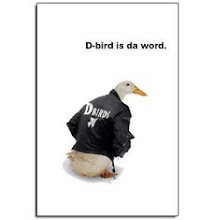Me, I'm a humanities creature - stats aren't something to which I'm naturally drawn.
But library loan stats? They're a friend. Tough love friend, sometimes. Best buddy, sometimes.
With our computerised system (OASIS) and a calculator, I regularly do a wee bit of totting to see how our various programs to encourage borrowing and library use are influencing our loan statistics. I would never never say that this data is the only way to evaluate a library's success - and indeed some of our programs, in intent and execution, cannot be measured in this way. Nevertheless, checking our 'sales figures' does provide a snapshot of one area of library activity.
With our system, I get the figure on loan statistics - the number of items loaned so far this year, for example (A). I then set the parameters to give me the figure for the same date range for each of the last three years. I add up these three and divide by three to get an average (B). A-B = C, or the difference (hopefully a + number). C divided by B then % gives you your percentage increase (hope it's an increase!) in loans for the year. I would do this calculation at least once a week, sometimes more often if I'm interested to see the impact of something in particular (eg the first day of holiday borrowing).
An example with fake figures:
2009 400 loans (A)
2008 300 loans
2007 250 loans
2006 200 loans
Adding up 2008 + 2007+ 2006 = 750 divided by 3 = 250 (average) (B)
A - B = 150 (C)
150 divided by 250 then hit the % key = 60%. So loans in 2009 in Fake Library are up 60% on the average of the last three years.
If you want to just get the difference between the current year and the previous one:
400 - 300 = 100. 100 divided by 300 then hit % key = 33%. So loans in Fake Library in 2009 are up 33% on 2008.
Important: to those outside the library, I speak of percentages, rather than raw numbers. A primary school library, lending to every class every week, for instance, may well have much higher raw numbers than my high school. Schools, of course, vary in student population size. Raw numbers can be taken the wrong way. My goal is to do better here, at this school, my competition is our previous record and seeing if we can better our 'sales figures'. Saying, "our loans are up 70% on the average of the last three years" is instantly clear and useful. I am my own competition. If you convert your school library's loan 'sales figures' to a percentage, then it is easier for us to compare our progress than with raw numbers, when they can involve so many variables.
It's also a motivating thing to do - when there's a dip, you look and see why, and what you can improve. When there's a rise, we all feel good about books and resources being in the hands of kids and teachers to help them achieve, read, learn, enjoy, progress.
And when I checked last week's figures, we had managed to pass the 70% increase milestone - woohoo!
Cheers, Ruth
*GIFSL = Good Ideas For School Libraries
.
Subscribe to:
Post Comments (Atom)






















No comments:
Post a Comment